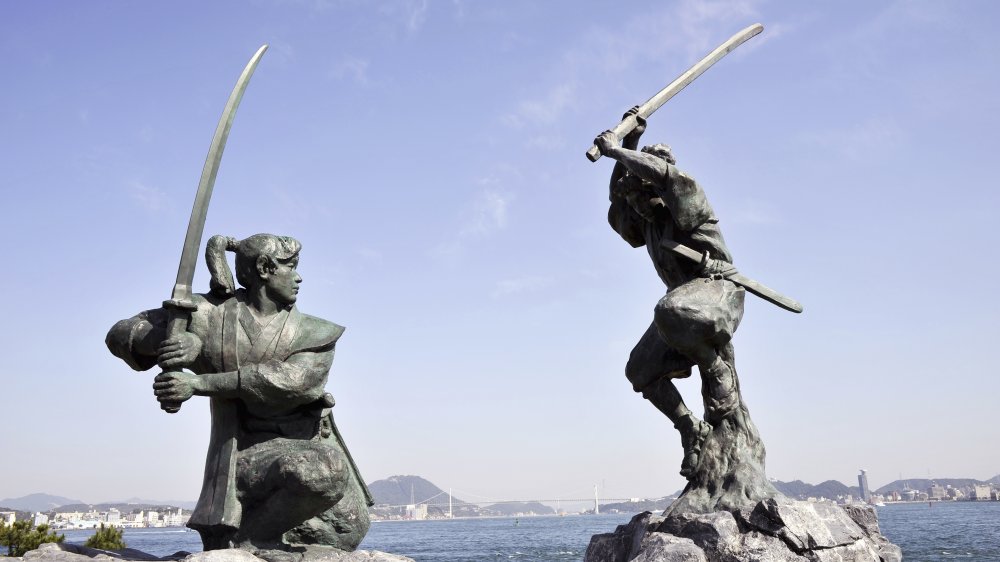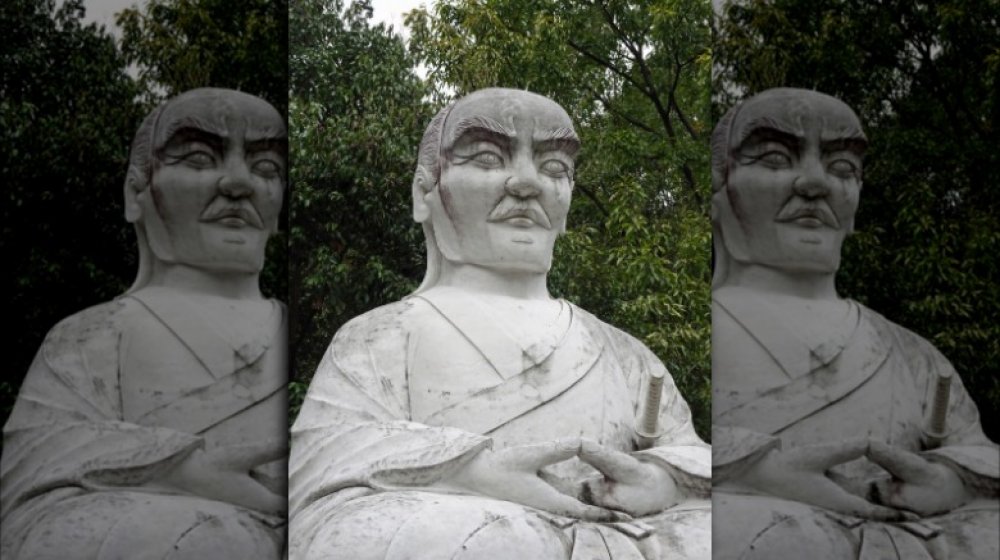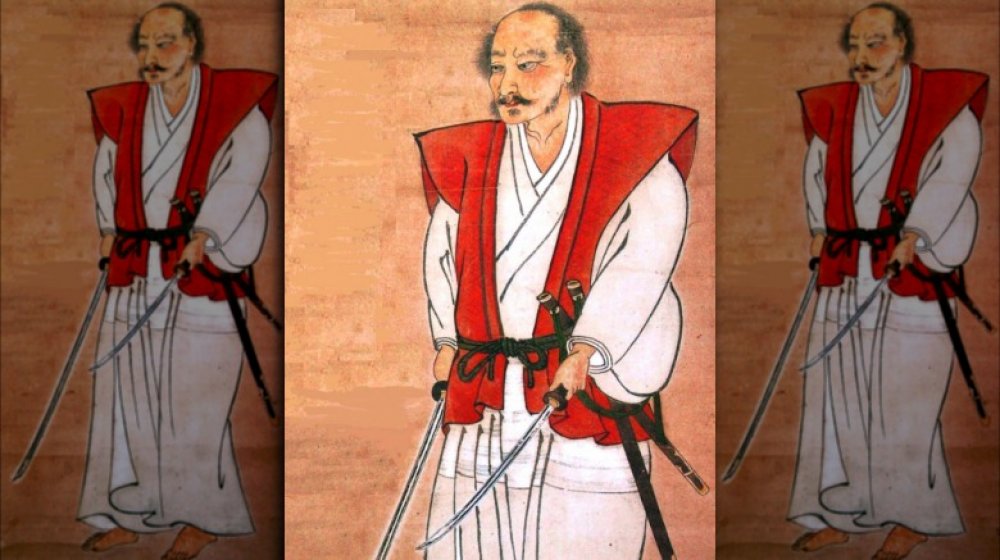The Japanese Swordsman Who Turned Into An Artist
The samurai brings to mind an image of a sincere, traditional swordsman or, possibly, the image of that one guy we all know who bought a knockoff sword online and won't shut up about it. But samurai, unlike the guy we know, were dedicated servants to the emperor or some other leading official. They were soldiers and, you're right, talented warriors. No swordsmen are as famous as the samurai, except maybe Alexandre Dumas's three musketeers.
Samurai gained their sword skills from a young age. Their training began in childhood, as PBS explains, and included much more than combat. Samurai exercised their minds as well as their bodies and spirits. They lived by a strict code and an education that wasn't common for laypeople of their time — poetry, Chinese culture, and Buddhism. Their minds were as sharp as their blades. Even the women in samurai society were educated and taught the ways of combat. It's no mystery why the samurai's fame spread through the west. And, no samurai was as famous as Miyamoto Musashi.
A man turned into a legend
Miyamoto Musashi earned his fame. His skills would eventually secure a legendary status for the swordsman, recounted in myths and stories. Musashi lived from 1584 until dying in 1645. At the time, 61 years was a long time to live, especially for anyone who had a life as eventful as Musashi's. The unfortunate part of the tale of Musashi is that it took place hundreds of years ago, which makes it difficult to separate legend from fact. Fact or legend, his was surely a great story.
This legendary swordsman, like all samurai, began his training when he was a wee one, and he wasn't much bigger when he attained his first victory. As The Karate Lifestyle relates, Musashi fought his first sword duel at the age of 13, defeating a fully trained, adult samurai in single combat. From there, Musashi claimed that he won 60 duels in his lifetime, the last one fought using a wooden sword he carved from an oar, against an opponent with an actual blade. Musashi quickly killed the man with a well-placed strike to the head. Musashi grew tired of dueling after that and decided to retire.
From samurai to ronin
In the year 1600, says Encyclopedia Britannica, Miyamoto Musashi fought for his master, Toyotomi Hideyori, in the Battle of Sekigahara. It was the one time Musashi was on the losing end of a fight. But that the sole purpose of the samurai was to serve their lord, whether win or lose, live or die. If a lord asked their samurai to take their own lives, the samurai would comply without question. Having lost the war, Musashi was now a ronin — a samurai with no master.
Instead of letting that get him down — living a life without purpose — Musashi set out to make his own way in the world. He would design the perfect sword-fighting art. What he developed is called the nitō ichi-ryū school of sword fighting. Within the style, the combatants fought while wielding two swords each. Musashi's combat prowess and fighting philosophies would earn him the title of "sword saint," one that few have ever been called before.
A legend turned into an artist
Musashi was more than a warrior. Having the education of the samurai, he transitioned his mind from battle to the arts. At this stage of his life, the famed former swordsman devoted his time to writing The Book of Five Rings, which has its own legends. Some claim Musashi wrote the book on his deathbed, to share his knowledge of swordsmanship and martial arts with future generations. Others tell a much wilder story, about Musashi climbing to the top of a mountain to write the book, but that probably confuses history with a fictionalized story of the master strategist.
Along with The Book of Five Rings, Musashi delved into other arts. He was a painter who worked in the style of suiboku-ga, a monochrome ink-painting style that originated in China. His paintings were pretty good, as can be seen at Black Rainbow Blade, and you can still find prints of them today. There so much more to the warrior legend of Miyamoto Musashi.



